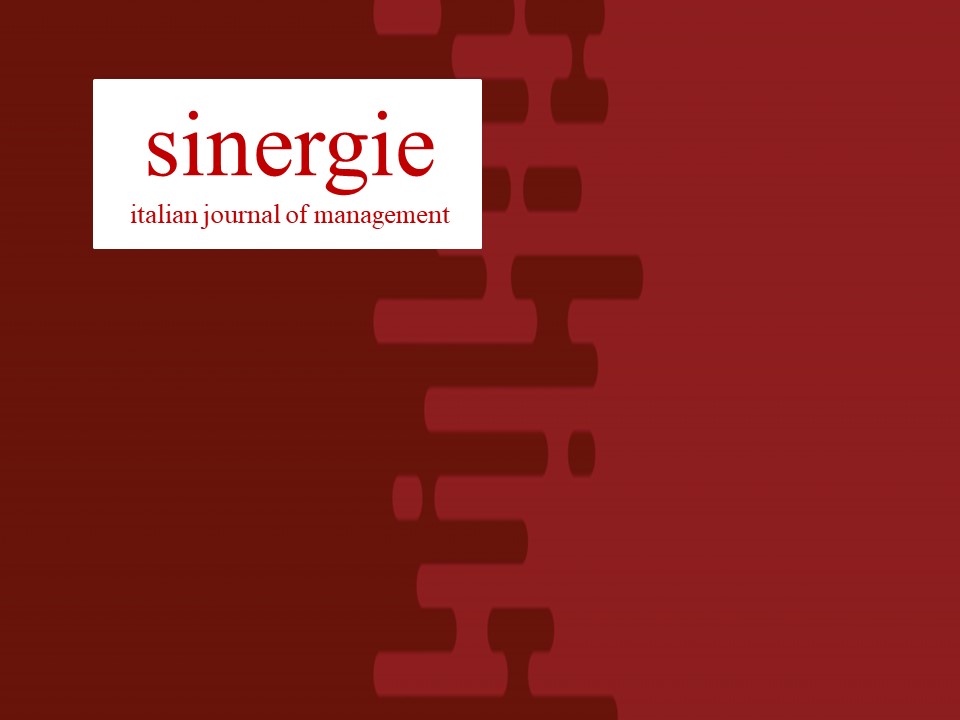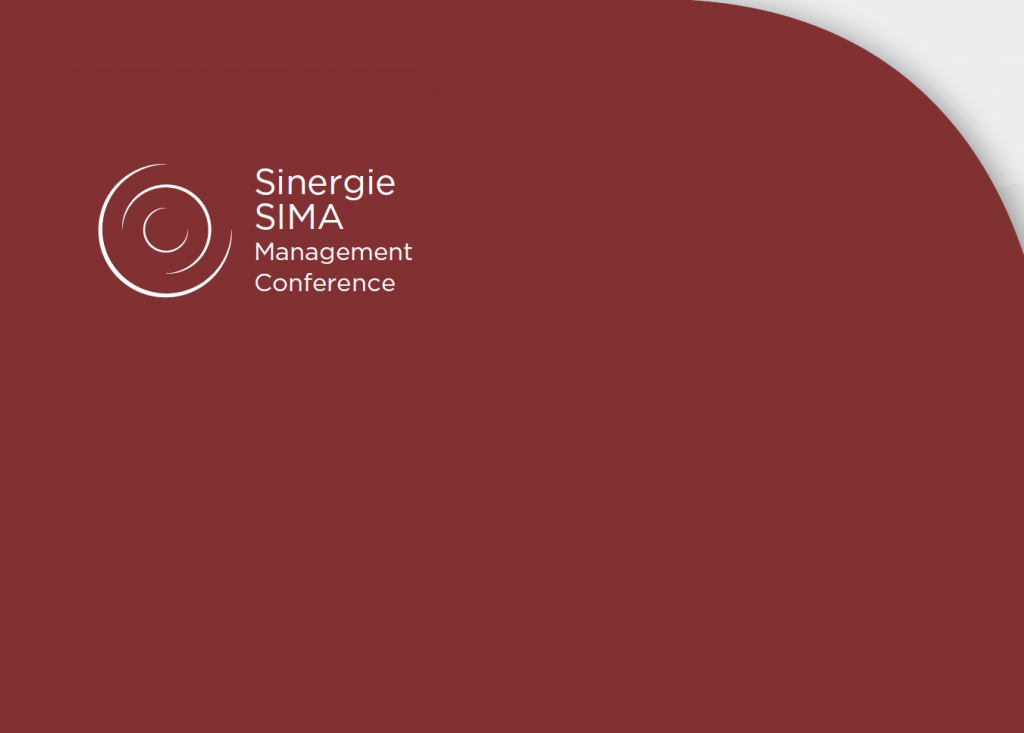New venture creation in academia: preconditions and drivers for the emergence of academic spin-offs
Purpose of the paper: This study aims to explore determinants for the emergence of academic spin-offs (ASOs). We analyzed individual, institutional and infrastructural factors that lead to the emergence of ASOs and their influence on the business model choice of firms in their start-up phase.
Methodology: The analysis is based on quantitative and qualitative methods; the field of research is the life sciences faculty of the University of Siena.
Findings: Consultancy by researchers is a positive predictor of the propensity to create a business. Quality and quantity of scientific production are associated positively but only up to a certain threshold, beyond which academics have less inclination for entrepreneurship. University department size plays a decisive role: scarcity of resources may limit the emergence and growth of ASOs. Science parks and university-industry liaison structures play a crucial role in the emergence and survival of new businesses. The resources, competence and motivation of the founders are the main determinants of the choice of business model of ASOs during the start-up phase.
Research limitations: The analysis regarded one medium-sized university and a single (albeit large) scientific field, i.e. life sciences.
Managerial implications: The results can help managers assess ex ante which university careers potentially lead to the emergence of ASOs.
Originality of the paper: Few prior studies have considered qualitative and quantitative empirical evidence on factors influencing the emergence of ASOs and the choice of business model during the start-up phase.
Riferimenti bibliografici
ABRAMO G., DANGELO C.A., FERRETTI M., PARMENTOLA A. (2012), An individual-level assessment of the relationship between spin-off activities and research performance in universities, R&D Management, vol. 42, n. 3, pp. 225-242.
ALGIERI B., AQUINO A., SUCCURRO M. (2013), Technology transfer offices and academic spin-off creation: the case of Italy, Journal of Technology Transfer, vol. 38, n. 4, pp. 382-400.
BARNEY J. (1991), Firm resources and sustained competitive advantage, Journal of Management, vol. 17, n. 1, pp. 99-120.
BAX A., CORRIERI S., DANIELE C., GUARNIERI L., PARENTE R., PICCALUGA A., RAMACIOTTI L., TIEZZI R. (2014), XI Rapporto Netval sulla Valorizzazione della Ricerca Pubblica Italiana. Unire i puntini per completare il disegno dellinnovazione. Available at http://www.netval.it (accessed 4 April 2015),
BUENSTORF G. (2009), Is commercialization good or bad for science? Individual-level evidence from the Max Planck Society, Research Policy, vol. 38, n. 2, pp. 281-292.
CASPRINI E., PUCCI T., ZANNI, L. (2014), Business model shifts: a case study on firms that apply high technology to cultural goods, Technology Analysis and Strategic Management, vol. 26, n. 2, pp. 171-187.
CLARYSSE B., WRIGHT M., VAN DE VELDE E. (2011), Entrepreneurial Origin, Technological Knowledge, and the Growth of Spin-Off Companies, Journal of Management Studies, vol. 48, n. 6, pp. 1420-1442.
COLOMBO M.G., DELMASTRO M. (2002), How effective are technology incubators? Evidence from Italy, Research Policy, vol. 31, n. 7, pp. 1103-1122.
COMPAGNO C., PITTINO D., VISINTIN F. (2005), Profili imprenditoriali, tecnologia e performance nelle nuove imprese, in Bodega D. (ed), Organizzare a misura duomo, Mcgraw Hill, Milano.
COOPER A.C., BRUNO A.V. (1977), Success among high-technology firms, Business Horizons, vol. 20, n. 2, pp. 16-22.
CORSI C., PRENCIPE A. (2015), University and Local Context-Level Success Factors of Academic Spin-off Performance, Journal of Management and Marketing, vol. 3, n. 1, pp. 31.
CORSI C., PRENCIPE A. (2015), University and Local Context-Level Success Factors of Academic Spin-off Performance, Journal of Management and Marketing, vol. 3, n. 1, pp. 12-26.
DESTE P., PATEL P. (2007), University-industry linkages in the UK: What are the factors underlying the variety of interactions with industry?, Research Policy, vol. 36, n. 9, pp. 1295-1313.
DESTE P., PERKMANN M. (2011), Why do academics engage with industry? The entrepreneurial university and individual motivations, Journal of Technology Transfer, vol. 36, n. 3, pp. 316-339.
DI GREGORIO D., SHANE S. (2003), Why do some universities generate more start-ups than others?, Research Policy, vol. 32, n. 2, pp. 209-227.
EISENHARDT K.M. (1989), Building Theories from Case Study Research, Academy of Management Review, vol. 14, n. 4, pp. 532-550.
ETZKOWITZ H., WEBSTER A., GEBHARDT C., TERRA B. (2000), The future of the university and the university of the future: evolution of ivory tower to entrepreneurial paradigm, Research Policy, vol. 29, n. 2, pp. 313-330.
FAZZI R. (1982), Il Governo dimpresa, Vol. I, Giuffr, Milano.
FELDMAN M., FELLER I., BERCOVITZ J., BURTON R. (2002), Equity and the technology transfer strategies of American research universities, Management Science, vol. 48, n. 1, pp. 105-121.
FINI R., GRIMALDI R., SANTONI S., SOBRERO M. (2011), Complements or Substitutes? The Role of Universities and Local Context in Supporting the Creation of Academic Spin-offs, Research Policy, vol. 40, n. 8, pp. 1113-1127.
FRYGES H., WRIGHT M. (2014), The origin of spin-offs: a typology of corporate and academic spin-offs, Small Business Economics, vol. 43, n. 2, pp. 245-259.
GILMORE A., CARSON D. (1996), Integrative qualitative methods in a services context, Marketing Intelligence and Planning, vol. 14, n. 6, pp. 21-26.
GIULIANI E., MORRISON A., PIETROBELLI C., RABELLOTTI R. (2010), Who are the researchers that are collaborating with industry? An analysis of the wine sectors in Chile, South Africa and Italy, Research Policy, vol. 39, n. 6, pp. 748-761.
HAEUSSLER C., COLYVAS J.A. (2011), Breaking the ivory tower: academic entrepreneurship in the life sciences in UK and Germany, Research Policy, vol. 40, n. 1, pp. 41-54.
LAMBOOY J.G. (2004), The transmission of knowledge, emerging networks, and the role of universities: an evolutionary approach, European Planning Studies, vol. 12, n. 5, pp. 643-657.
LANDRY R., AMARA N., RHERRAD I. (2006), Why are some university researchers more likely to create spin-offs than others? Evidence from Canadian universities, Research Policy, vol. 35, n. 10, pp. 1599-1615.
LANDRY R., AMARA N., SAHI M. (2007), Patenting and spin-off creation by Canadian researchers in engineering and life sciences, Journal of Technology Transfer, vol. 32, n. 3, pp. 217-249.
LANDRY R., SAHI M., AMARA N., OUIMET M. (2010), Evidence on how academics manage their portfolio of knowledge transfer activities, Research Policy, vol. 39, n. 10, pp. 1387-1403.
LAZZERI F., PICCALUGA A. (2014), Le imprese spin-off della ricerca pubblica in Italia: cosa fare dopo le prime mille?, Sinergie, n. 17, pp. 47-66.
LAZZERONI M., PICCALUGA A. (2003), Towards the entrepreneurial university, Local Economy, vol. 18, n. 40, pp. 38-48.
LEHOUX P., DAUDELIN G., WILLIAMS-JONES B., DENIS J.-L., LONGO C. (2014), How do business model and health technology design influence each other? Insights from a longitudinal case study of three academic spin-offs, Research Policy, vol. 43, n. 6, pp. 1025-1038.
LINK A.N., SCOTT J.T. (2005), Opening the ivory towers door: An analysis of the determinants of the formation of U.S. university spin-off companies, Research Policy, vol. 34, n. 7, pp. 1106-1112.
LOWE R.A., GONZALES-BRAMBILA C. (2007), Faculty entrepreneurs and research productivity, Journal of Technology Transfer, vol. 32, n. 3, pp. 173-194.
OSHEA R., ALLEN T.J., CHEVALIER A., ROCHE F. (2005), Entrepreneurial orientation, technology transfer and spinoff performance of U.S. universities, Research Policy, vol. 34, n. 7, pp. 994-1009.
OSHEA R.P., CHUGH H., ALLEN T.J. (2008), Determinants and consequences of university spinoff activity: a conceptual framework, Journal of Technology Transfer, vol. 33, n. 6, pp. 653-666.
OECD (1997), Technology incubators: nurturing small firms, OCDE/GD, vol. 97, n. 202.
PAVITT K. (1984), Sectoral Patterns of Technical Change: Towards a Taxonomy and a Theory, Research Policy, vol. 13, n. 6, pp. 343-373.
PHILPOTT K., DOOLEY L., OREILLY C., LUPTON G. (2011), The entrepreneurial university: Examining the underlying academic tensions, Technovation, vol. 31, n. 4, pp. 161-170.
PICCALUGA A. (2000), I processi di filiazione. Limpresa crea impresa e la ricerca crea impresa, in Lipparini A., Lorenzoni G. (eds), Imprenditori e imprese, Il Mulino, Bologna.
PIRNAY F., SURLEMONT B., NLEMVO F. (2003), Toward a typology of university spin-offs, Small Business Economics, vol. 21, n. 4, pp. 355-369.
PUCCI T., SIMONI C., ZANNI L. (2013), Modelli di business e strategie di marketing nelle medie imprese. La gestione della crisi tra continuit e cambiamento, Mercati e Competitivit, vol. 3, pp. 25-45.
PUCCI T., ZANNI L. (2012), Scienza, Imprese e Territorio. Unanalisi degli attori e delle sinergie locali per lo sviluppo del Distretto Toscano di Scienze della Vita, Edizioni Il Leccio, Siena.
RAMACIOTTI L., RIZZO U. (2014), The determinants of academic spin-off creation by Italian universities, R&D Management, DOI: 10.1111/radm.12105.
RAMELLA F., TRIGILIA, C. (Eds) (2010), Imprese e territori dellalta tecnologia in Italia, Il Mulino, Bologna.
RASMUSSEN E., BORCH O.J. (2010), University capabilities in facilitating entrepreneurship: a longitudinal study of spin-off ventures at mid-range universities, Research Policy, vol. 39, n. 5, pp. 602-612.
RASMUSSEN E., MOSEY S., WRIGHT M. (2011), The Evolution of Entrepreneurial Competencies: A Longitudinal Study of University Spin-Off Venture Emergence, Journal of Management Studies, vol. 48, n. 6, pp. 1314-1345.
RASMUSSEN E., MOSEY S., WRIGHT M. (2014), The influence of university departments on the evolution of entrepreneurial competencies in spin-off ventures, Research Policy, vol. 43, n. 1, pp. 92-106.
RIZZO U. (2015), Why do scientists create academic spin-offs? The influence of the context, Journal of Technology Transfer, vol. 40, n. 2, pp. 198-226.
SIEGEL D.S., WALDMAN D., LINK A. (2003), Assessing the impact of organizational practices on the relative productivity of technology transfer offices: an exploratory study, Research Policy, vol. 32, n. 1, pp. 27-48.
SOETANTO D., VAN GEENHUIZEN M. (2015), Getting the right balance: University networks influence on spin-offs attraction of funding for innovation, Technovation, vol. 36-37, February-March 2015, pp. 26-38.
STAKE R.E. (1995), The art of case study research, Sage Publications, Thousand Oaks, California.
STANCKIEWICZS R. (1994), University Firms. Spin-off companies from Universities, Science and Public Policy, vol. 21, n. 2, pp. 99-107.
STOKES D. (2000), Entrepreneurial marketing: a conceptualization from qualitative research, Qualitative Market Research, vol. 3, n. 1, pp. 47-54.
VALLINI C. (1990), Fondamenti di governo e di direzione dimpresa, Giappichelli, Torino.
VINCETT P.S. (2010), The economic impacts of academic spin-off companies, and their implications for public policy, Research Policy, vol. 39, n. 6, pp. 736-747.
VISINTIN F., PITTINO D. (2014), Founding team composition and early performance of university-Based spin-off companies, Technovation, vol. 34, n. 1, pp. 31-43.
WALTER A., AUER M., RITTER T. (2006), The impact of network capabilities and entrepreneurial orientation on university spin-off performance, Journal of Business Venturing, vol. 21, n. 4, pp. 541-567.
YIN R.K. (2003), Case Study Research. Design and Methods, Third Edition, Sage Publications, Thousand Oaks.
ZANNI L. (1995), Imprenditorialit e Territorio. Evoluzione dei modelli imprenditoriali e delle strategie di localizzazione delle imprese industriali, Cedam, Padova.
ZOTT C., AMIT R., MASSA L. (2011), The Business Model: Recent Developments and Future Research, Journal of Management, vol. 37, n. 4, pp. 1019-1042.


